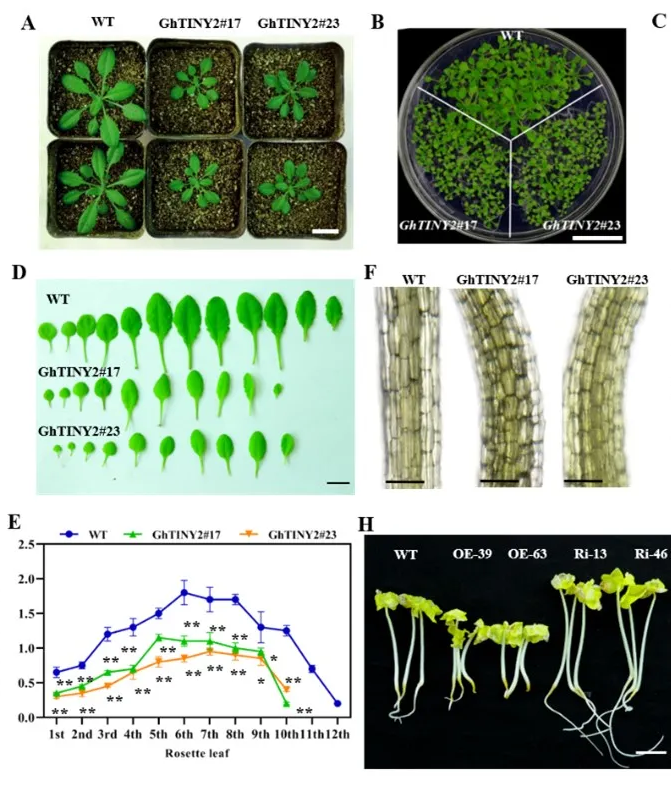Abstract
Salicylic
acid (SA) and brassinosteroids (BRs) are well known to regulate diverse processes of plant development and stress responses, but the mechanisms by
which these phytohormones mediate the growth-defense trade-off is largely
unclear. In addition, little is known about the roles of DEHYDRATION RESPONSIVE
ELEMENT BINDING (DREB) transcription factors, especially in biotic stress and
plant growth. Here, we identified a cotton (Gossypium hirsutum)
APETALA2/ETHYLENE RESPONSIVE FACTOR (AP2/ERF) gene GhTINY2 which is strongly
induced by Verticillium dahliae. Overexpression of GhTINY2 in cotton and
Arabidopsis (Arabidopsis thaliana) enhanced tolerance to V. dahliae, while
knockdown of GhTINY2 expression increased cotton susceptibility to the
pathogen. By directly activating WRKY51 expression, GhTINY2 promoted SA
accumulation and SA signaling transduction. Moreover, GhTINY2-overexpressing
cotton and Arabidopsis showed growth retardation, increased sensitivity to
inhibitors of BR biosynthesis and downregulation of several BR-induced genes
and upregulation of BR-repressed genes, while GhTINY2-RNAi cotton showed the
opposite results. We further demonstrate that GhTINY2 negatively regulates BR
signaling by interacting with BRASSINAZOLE-RESISTANT 1 (BZR1) and restraining
its transcriptional activation of the expression of INDOLE-3-ACETIC ACID
INDUCIBLE 19 (IAA19). These findings indicate that GhTINY2 fine-tunes the
immunity-growth trade-off via an indirect crosstalk between WRKY51-mediated SA
biosynthesis and BZR1-IAA19-regulated BR signaling.
